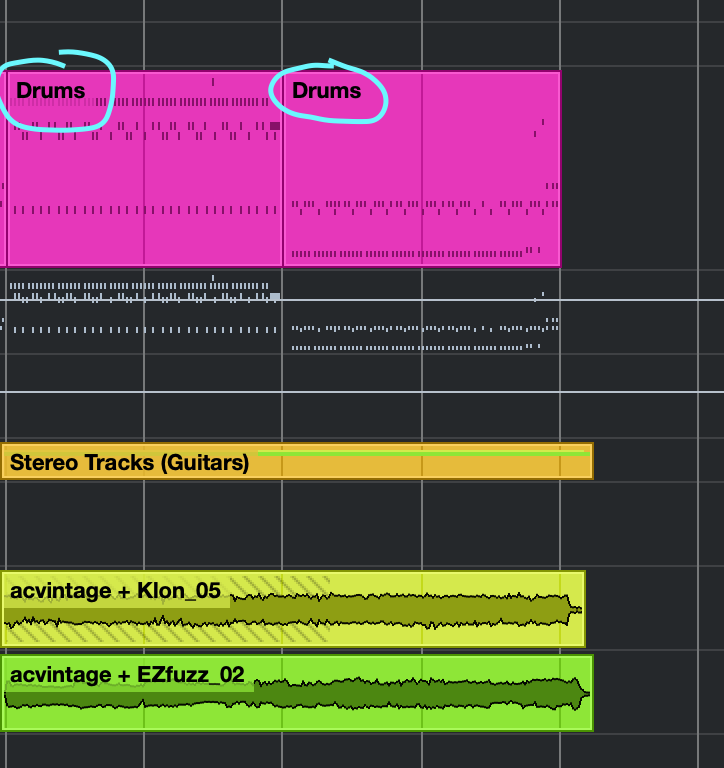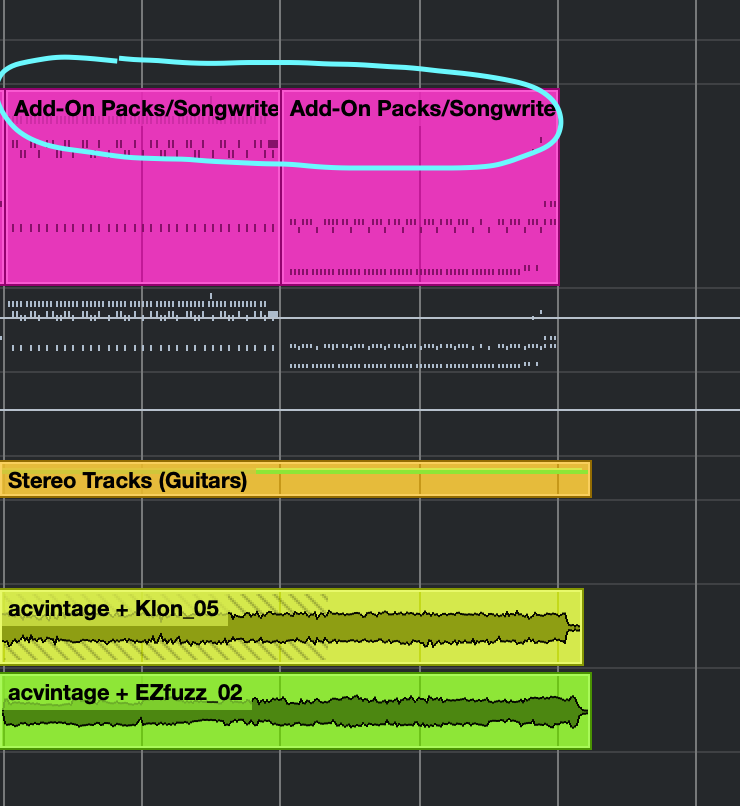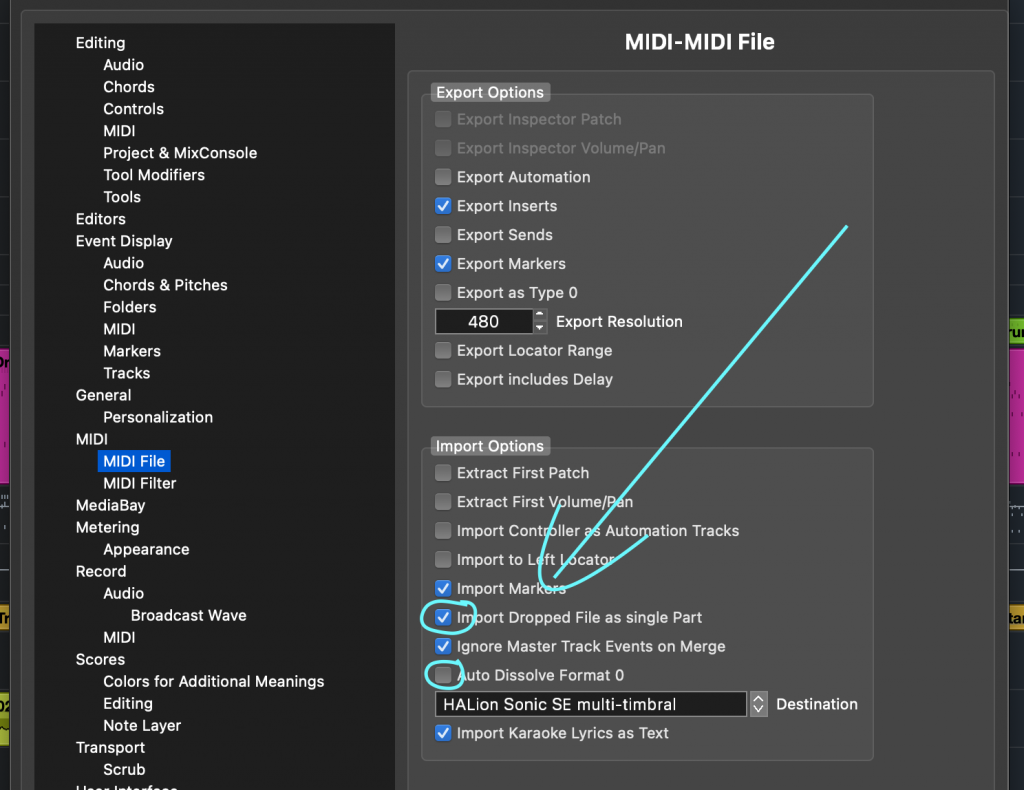So i noticed quite some time ago that when i Drop ‘Grooves’ from Superior Drummer 3 into a Midi
Track in Cubase 12, it’s not showing the Path of the ‘Groove’ anymore in that dropped Midi section.
But instead it shows only the Name of the Track like so:

This must have somehow gotten in with Cubase 12, because i remember it wasn’t like this before.
And i couldn’t really be bothered to try an change it up until today when i realized that i spend a LOT of time reconstructing from which midi pack i’ve used a certain Groove.
It can be done by just dragging that midi part into the ‘Tap2Find’ Box in Superior Drummer 3, but its still annoying. Plus, If i have changed the midi, then it won’t be able to give me the correct
Path with 100% assurance.
So it is much better if the Actual Pack/Subfolder Path and Midi name is in the midi part like it used to be.
I did find out how to do it and now it looks like this:

So now if your ADHD does not permit you to remember which Groove from which Pack you dropped there 12 Seconds ago,
you can just expand that Midi section and it’s right there. Boom!

Great, right?
Here is the Short Explanation on how to make this work in your cubase Settings. It’s just two Settings that have to be changed like this:

I found this after quite some digging on: https://forums.steinberg.net/t/drag-drop-midi-part-naming/112230/11
Here is the long answer from Neil B. (Thanks Neil):
Most DAWs give users the option of exporting MIDI as either type 1 (multi-track), or type 0 (single track only), although the option is often buried deep within layered menus.
I’ve attached 2 re-exported MIDI files from Logic, one as type 0, the other as type 1 – the type 1 version, at least in Cubase Elements 9, loads with the correct embedded name, despite the Cubase channel name.
I’ve also attached 2 ‘Test’ MIDI files, both of which contain embedded names – the type 1 file displays it’s correct name, the type 0, as expected in Cubase, does not.
I’ve managed to get around this issue by visiting Cubase → Menu → Preferences → MIDI → MIDI File, and unchecking the ‘Auto Dissolve Format 0’ option. This then allows Cubase to correctly import the MIDI type 0 files, with their internally written channel name.
I tested this and forwarded the results and test files to Raino.
It works fine. Nickeldome was on the ball with the answer – to a degree.
However, I’ll add a bit more to this now:
If you uncheck the autodissolve Format 0 and then import or drag & drop a “rogue” midi file, the midi file may appear on the wrong track and actually create 2 midi files. The other file contains SMF or sysex data only.
So, go to preferences midifile and tick “Import dropped file as a single part” and drage & drop again.
Job done.
Okay, preferences are supposed to be set and forgotten for the most part, but this is an area that’ll have to be changed depending on the midi files that you drag and drop. For instance, if you have a midi file with lots of parts (or stems), this’ll become messy. It’s a case of suck it and see when you drop the midi file in.
Hope this helps all who are interested and a big thanks to Dance Midi Samples for answering a query I’ve had for years (and for saving me hours of headaches in the future).
Hope this helps
Neil B
